The production plan:
There are three main things that boss music normally has, a high tempo, syncopation and chromaticism.
I’d be looking to have a bpm of around 130-160 to create a tense and energetic sound. In addition, I need to look at how I could use chromatic chords and develop melodies using a chromatic scale alongside the A minor scale without it sounding like it clashes too much. After experimenting with this, I should begin writing to an interesting drum beat to accompany the melody & chords and figure out how to shift notes to offbeats, suspend notes or allow tension to build with missed beats.
I should take inspiration from Toby Fox’s original composition for Asgore to understand the mood I may want to aim for and find other music that is 8-bit which is also for a boss fight to see how different the same task could be. I also bought and plan to play Undertale to fully understand how Toby Fox composed thematically and how the music affects gameplay.
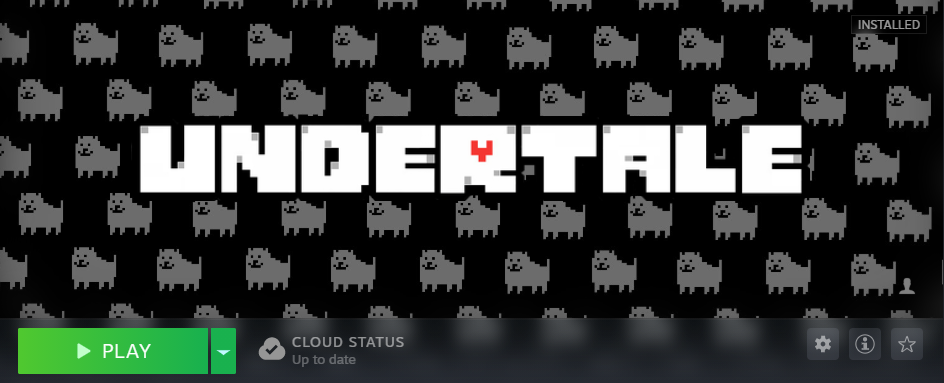
To start with, I experimented with an idea in C major that I could adjust to A minor with a slow tempo with plans to use it as an introduction. I recorded for a long time just to show different ideas and development.
The timing is slightly off because there’s a delay between playing and how it’s recorded. It’s in 3/4 but I wrote it as though it was in standard time here on screen, so I adjusted it and developed it below. I like the idea overall because it has a lot of potential as an intro and can be made more intense by modulating after a few bars to A minor and building up. I can already see how I could create countermelodies or develop new melodies and sections based off of this idea.
After some adjusting and some development, here’s where I went with the above idea without adding chords or a melody. I made some notes variate to make it more interesting and allowed a smooth transition between the C major section and A minor part by adjusting the end of that section to have a descending melody.
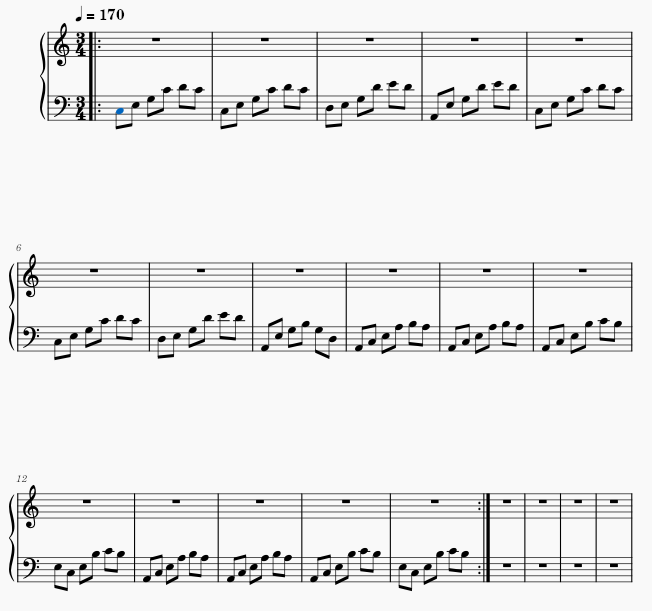
Here’s what that sounds like by itself:
I feel as though I should make the modulation occur sooner as to not set the tone as mostly major and to make it easier to develop into a minor build up, so I’ll try that. What I have right now totals to around 17 seconds, but could be shortened as this is only the introduction. I could variate the rhythm to have more of a swing feel but it may feel too bright in the major section.
I don’t like this, but I had a general idea and had to save it to see what I can change and make better. The bass part is in the treble section, which I didn’t realise until after I recorded this. I think I could experiment with the kick to see where it has the most impact and reserve the crash for later on in the composition or at least the second half of this part because it’s too much to start off with.
I tried a different bass part that matched the tempo better and think it’s more fit to accompany a melody and wrote out the part I have written above into Logic.

The above had these effects (explain osc shape and reason for amp env setting and filter env, as well as flanger settings.

8/12/22
I ended up scrapping everything I had before and made a 31 second long piece on musescore in 45 minutes. I like this one much more because it fits the theme much better and will likely sound really good in the retro 8 bit style we use on logic.
Although it’s not as intense sounding as I’d like it to be, it feels like an emotional, hopeful piece while still suggesting conflict due to the drum beat and alternating bass notes throughout. In my opinion, the descending pattern in the introduction sounds slightly too slow but introduces the alternating bass nicely.
I edited the introductory section and made sure parts repeated where necessary. The score is below. It’s written in A major but utilises B minor often as a tension builder.

I decided the bass clef section should have shorter note durations to emphasise the feeling of tension by creating a ‘jumpy’ sound. The drum part is unusual but fits the theme of game music. Parts of it sound vaguely like a heartbeat, which is the item the player controls during the fight in the game. I like the idea of dark, rich and gloomy chords opening every two bars, this chord is B minor, the second chord in the A major scale. It gives the piece an uneasy feel opposed to being entirely major. The opening pattern is a conjunct descending melody and is descending to suggest negativity and a darker and lower pitched part following it.

The alternating bass section shifts into the treble section by becoming two octaves higher, clashing with the main melody. This gives it a chaotic feel for a short while. Besides that, everything else is a repeat of what was played on the page before.

I chose to drop multiple parts in the last two bars to thin the texture and continue the feeling of tension while tying in the feeling of loneliness without the accompaniment of either bass parts and a simpler drum part. The repetition of chords in the last bar doesn’t travel anywhere so it feels like the piece never resolves.
I found a website that alters midi files to make it have the 8-bit sound because I don’t have access to Logic at home and I was curious as to how it would sound.
I really liked how notes were split and repeated here, so I’m planning on editing the score to have a similar or the same effect and including this in Logic, too. Overall, I’m pleased with how this sounds and excited about how the final composition will sound.
This is the final score. The Logic composition could change in small ways but the images below are what I’m working based on.
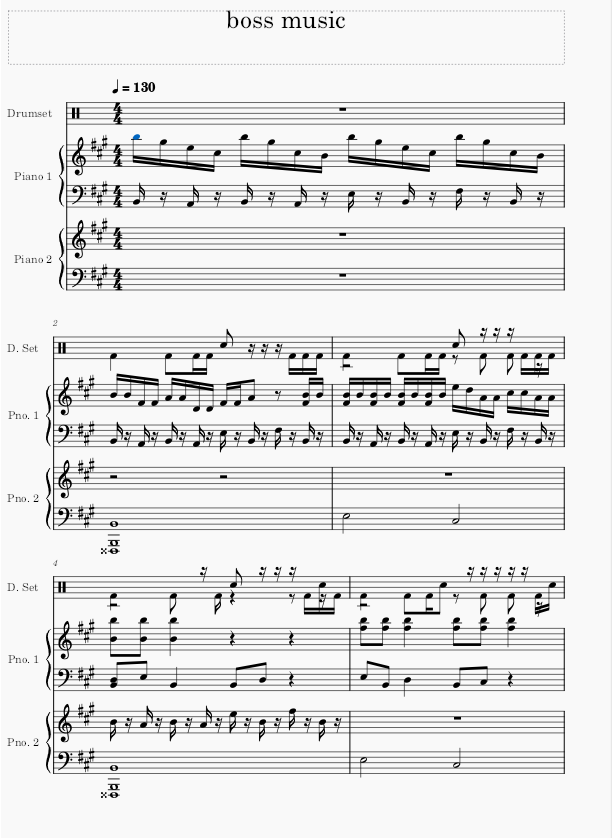
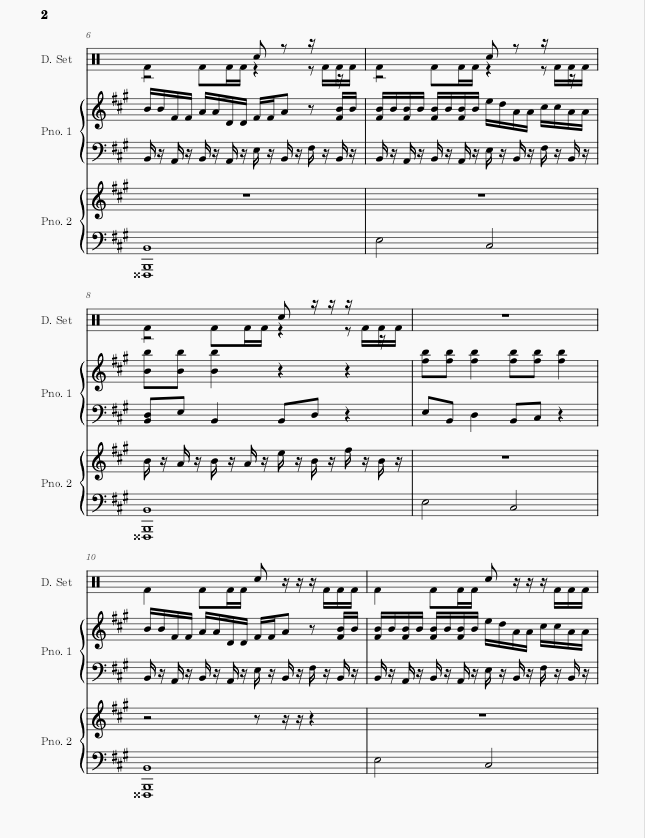
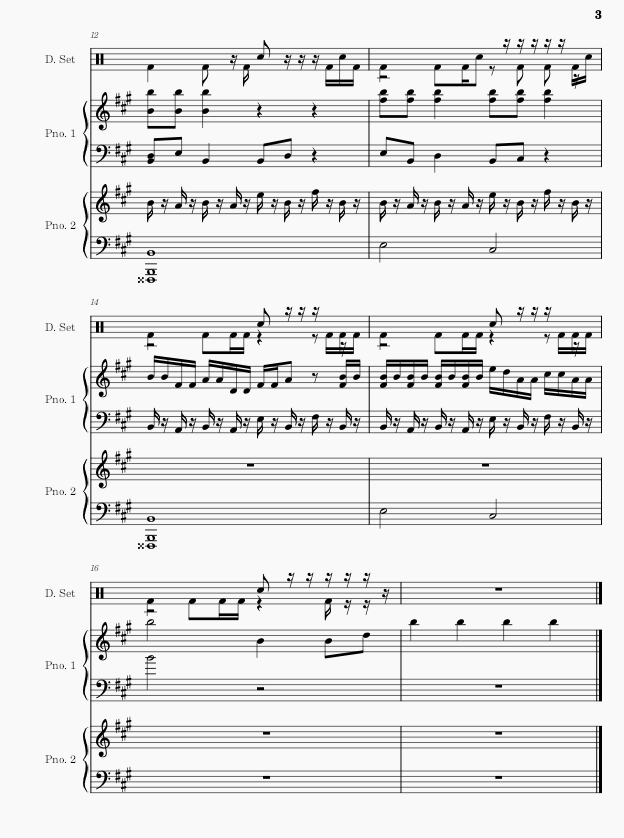
I doubled up parts of the piano’s treble section after considering how it could sound in 8-bit. It offers a more scattered feeling while still being in time.
Here’s how it sounds without effects:
After putting everything in Logic, I adjusted the retro sounds to how I’d like them
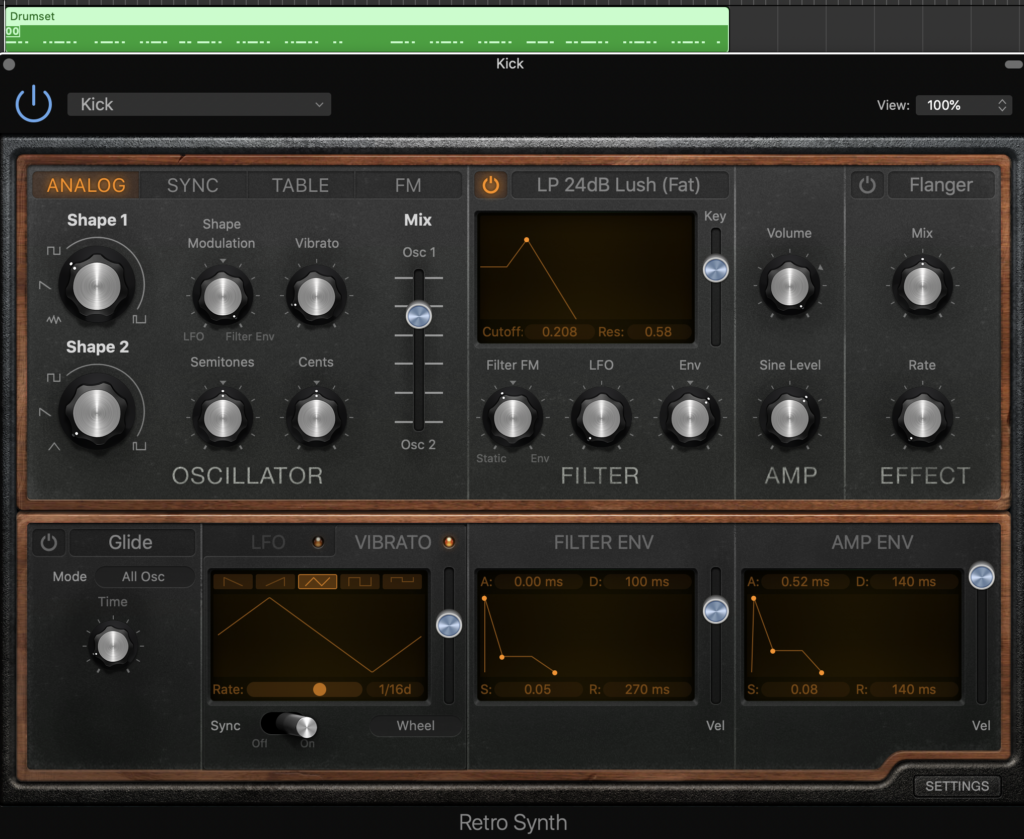
It took me a very long time to get the kick sounding impactful enough to notice it, but I experimented with the sine level and env and it seemed to have more of a punchy feeling.
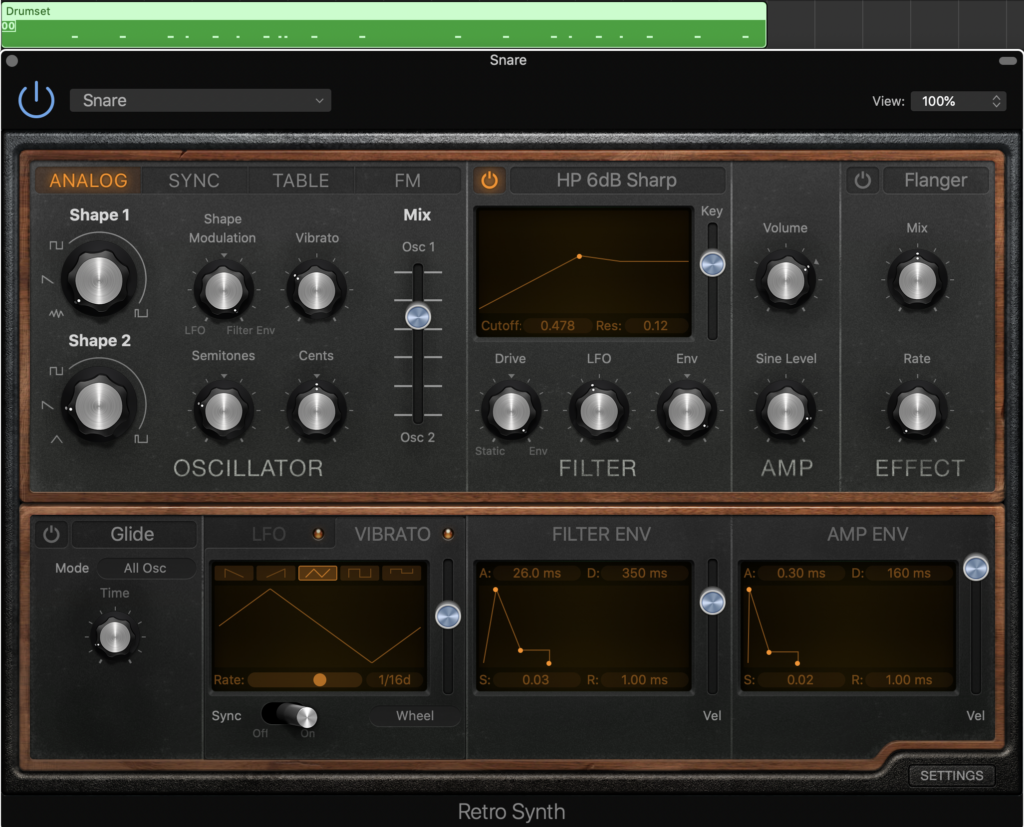
The kick and snare together feel like a strong pair and are the backbone to the whole song.
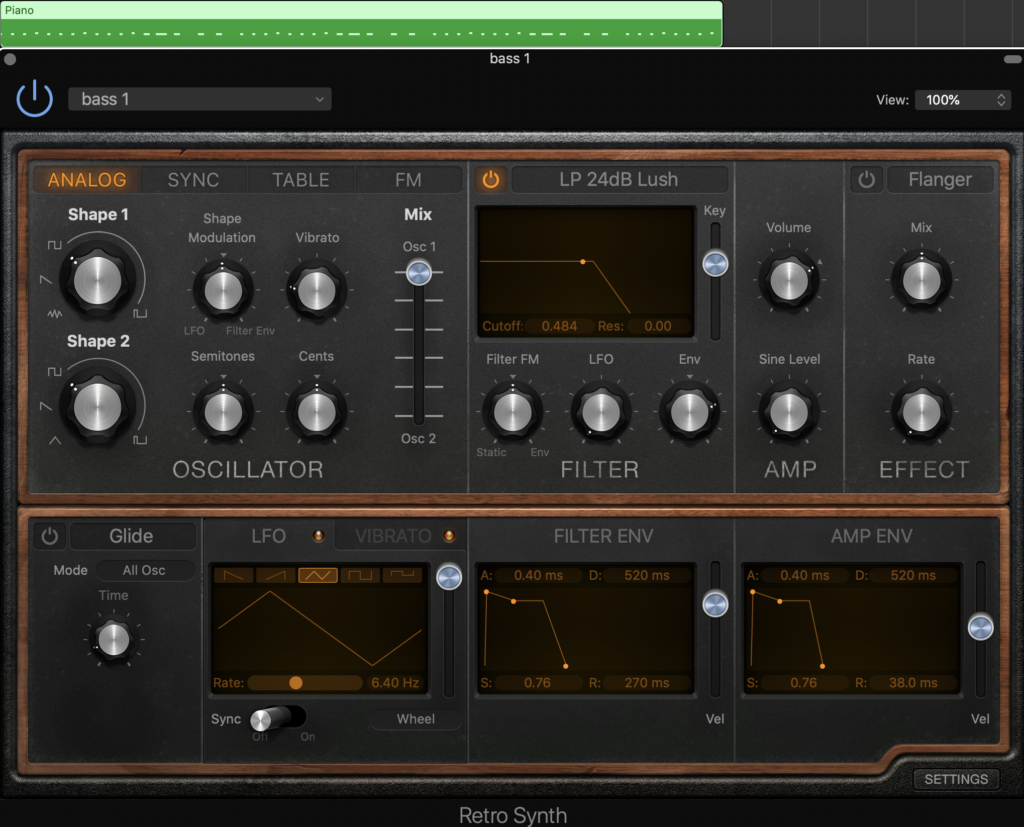
The bass parts were separated so I could pan them more effectively, with each of them missing a note one after the other. They both had the same tone though to maintain a convincing panning effect.
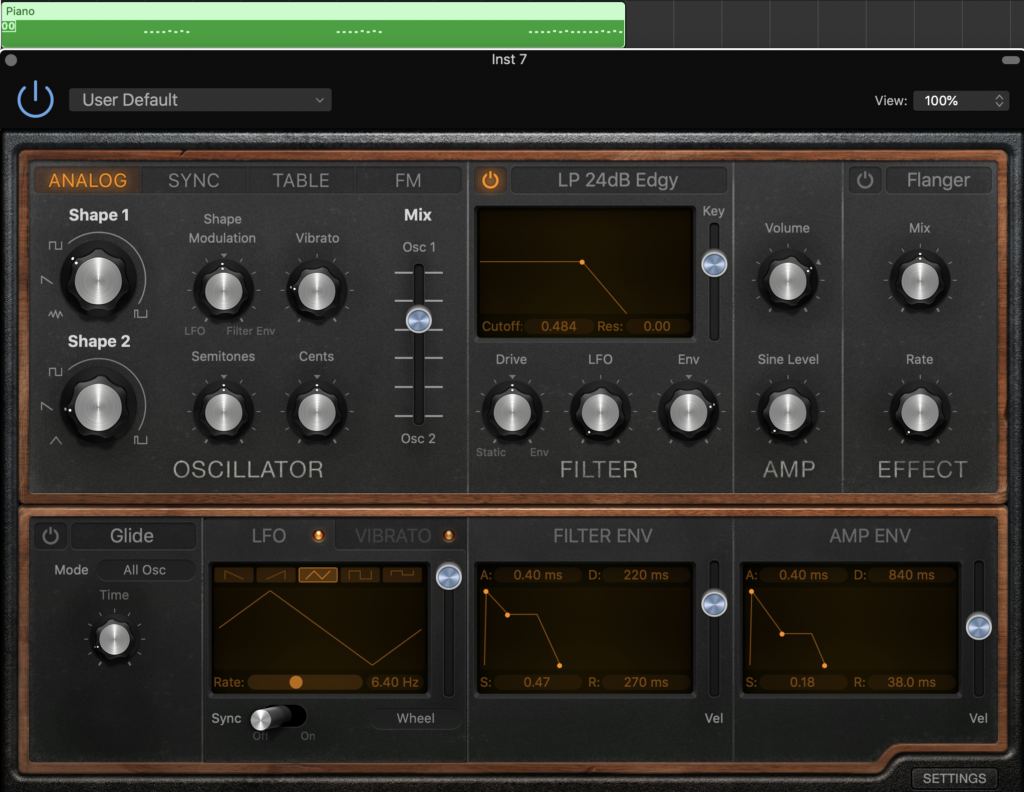
I shifted the bass two octaves higher while the main melody shifted upwards too. The bass that continued playing had a different part and stayed in the correct octave.
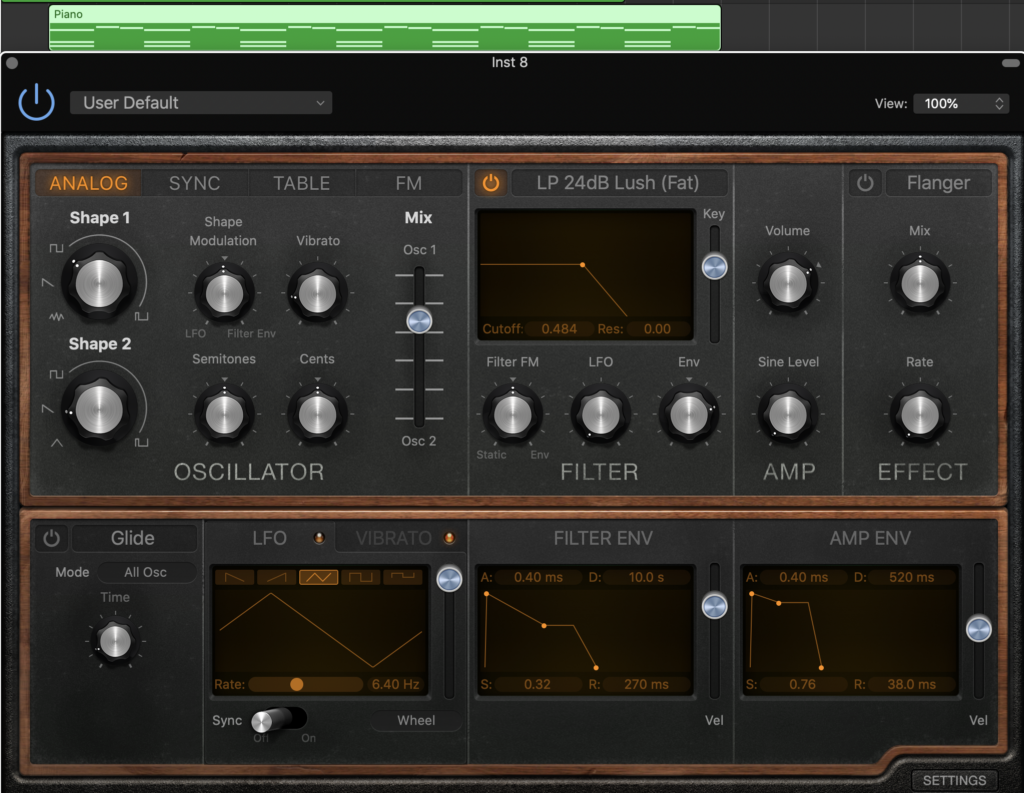
I removed the lower notes from this bass part as it was muting other parts to make it have more impact. Long, drawn out notes alongside shorter notes in another bass part built tension as lower notes sound more menacing.
This is what I finished this term with. I’m very proud of it and I’m glad I chose to start again after two scrapped ideas.
I love the panning in particular, it allows lower pitched parts to have more impact as they’re not jumpy in contrast. The double notes in the main melody enhance the energetic feeling that I hoped it would have.